Discover 35 hidden attractions, cool sights, and unusual things to do in Katowice (Poland). Don't miss out on these must-see attractions: Silesian Insurgents' Monument, Church of St. Michael the Archangel, and Silesian Museum. Also, be sure to include Kościuszko Park in your itinerary.
Below, you can find the list of the most amazing places you should visit in Katowice (Silesian).
Table of Contents
Silesian Insurgents' Monument
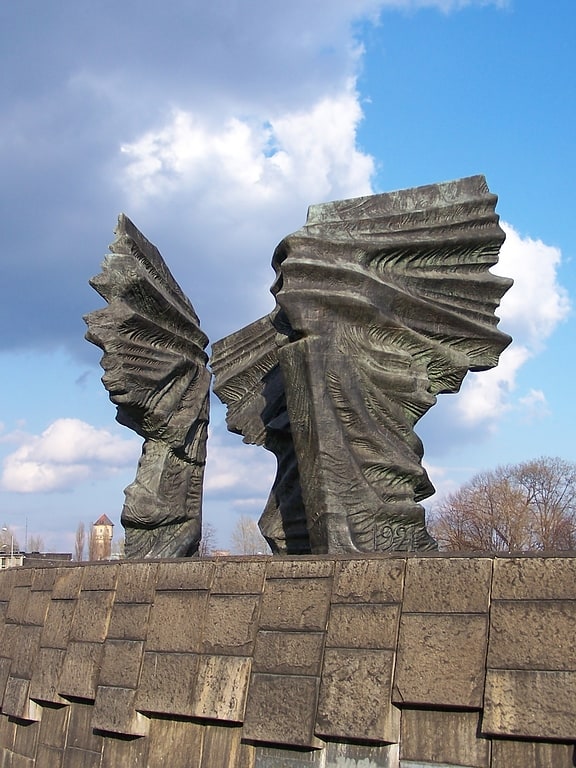
Also known as: Pomnik Powstańców Śląskich
Historical landmark in Katowice, Poland. The Silesian Insurgents' Monument in Katowice, southern Poland, is a monument to those who took part in the three Silesian Uprisings of 1919, 1920 and 1921, which aimed to make the region of Upper Silesia part of the newly independent Polish state. The monument was unveiled on 1 September 1967, and was designed by sculptor Gustaw Zemła and architect Wojciech Zabłocki. The wings symbolize the three uprisings, and the names of places where battles were fought are etched on the vertical slopes. The monument was funded by the people of Warsaw for Upper Silesia.[1]
Church of St. Michael the Archangel

Also known as: Kościół św. Michała Archanioła w Katowicach
Building in Katowice, Poland. Church of St. Michael Archangel is one of the oldest buildings in Katowice. It's located in Kościuszko Park, where it was moved in 1938 from the village Syrynia, where it was originally constructed in 1510. It is under the invocation of St. Michael.
It has end-fitted log framework construction and shingled roof. Free-standing belltower was completed before 1679; it has historic lych-gate and wooden fence around the churchyard.[2]
Address: Gawronów 20, 40-001 Katowice, Katowice (Zespół dzielnic zachodnich)
Silesian Museum

Also known as: Muzeum Śląskie w Katowicach
Museum in Katowice, Poland. Silesian Museum in Katowice is a museum in the City of Katowice, Poland.[3]
Address: al. Korfantego 3, 40-005 Katowice (Zespół dzielnic śródmiejskich)
Kościuszko Park
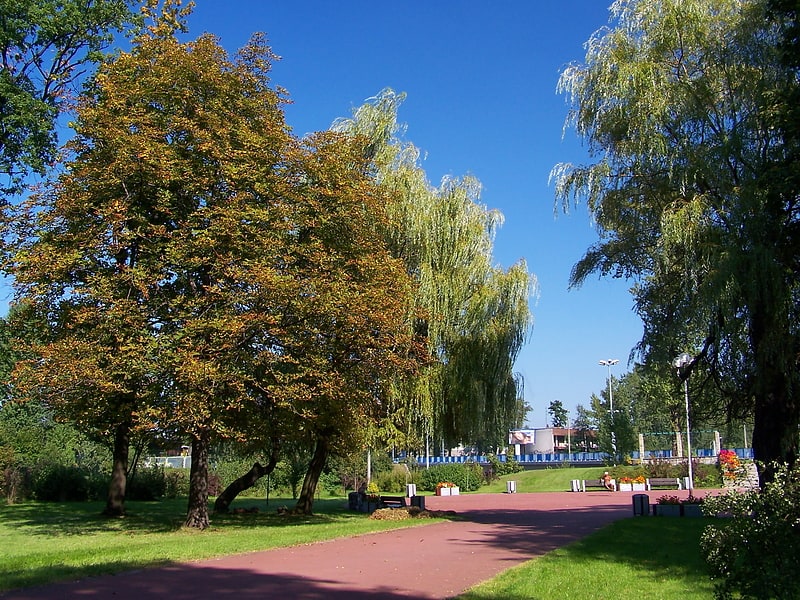
Also known as: Park im. Tadeusza Kościuszki w Katowicach
Park in Katowice, Poland. The Kosciuszko Park, which has existed since 1925, is one of the most famous and frequented parks in Katowice, Poland. It is situated at the street of the same name.
Its foundation dates back to 1888 when a municipal park was founded on the 6 ha area of suburban grove. The present area of the park is 72 ha. Its arrangement is influenced by English gardens-parks, which is emphasized by an alley of roses turned to wild. There are flower arrangements on the flower-beds and pergolas and classicistic gardens. After dusk the park is lit by stylish street lamps.
In the park there are several structures, such as a commemorative plaque funded for the patron, Tadeusz Kościuszko, by the people of Katowice in 1925. The parachute tower also dates back to that time. It is currently being rebuilt to its height of 40 m; it was erected as a training structure. Not far from it there is a monument commemorating the heroic participation of scouts in the defence of the town against the Nazi invaders in 1939. Two wooden structures, Upper Silesia, a manorial granary from 1688 (burnt in 1970) and the Church of St. Michael Archangel, a wooden church under the invocation of St. Michael from 1510 moved from Syrynia, were placed in the park. The park also houses a permanent gallery of plein-air sculpture, collecting works of famous artists of the region: Zygmunt Brachmanski, Augustyn Dyrda, Joachim Krakowczyk, Piotr Latoska, Jacek Sarapata, Andrzej Szczepaniec.
In winter children can use a toboggan track and a ski route. The Soviet soldiers who died in 1945 are also buried there. The Park Hall, erected in the 1950s, is situated opposite the park and holds 3.500 people. At present it is a grocery/supermarket. Nearby there is a military cemetery from the interbellum, and toward the centre there is a sports stadium of the Physical Training Academy.[4]
St. Mary's Church
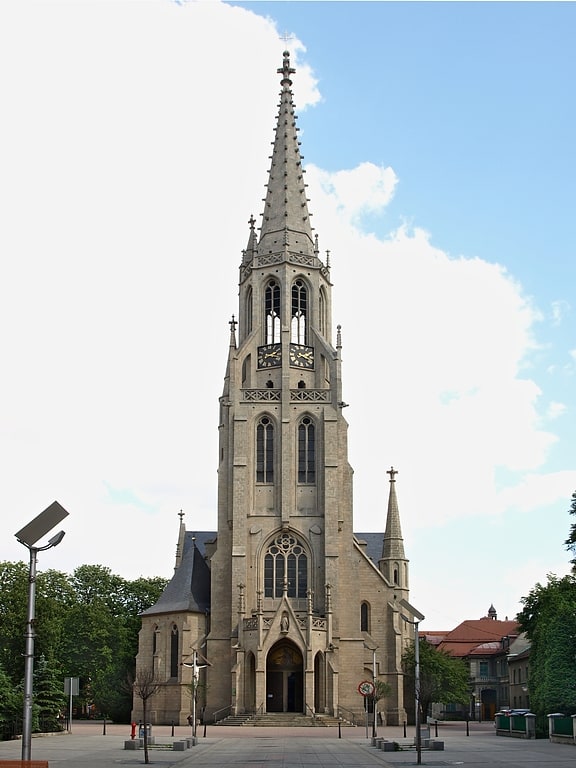
Also known as: Kościół Mariacki w Katowicach
St. Mary's Church in Katowice is one of the oldest churches in Katowice, Poland, dating back to 19th century. This neo-Gothic church is located in the Śródmieście district.[5]
Address: plac Szramka 1, 40-202 Katowice (Zespół dzielnic śródmiejskich)
Parachute Tower in Katowice
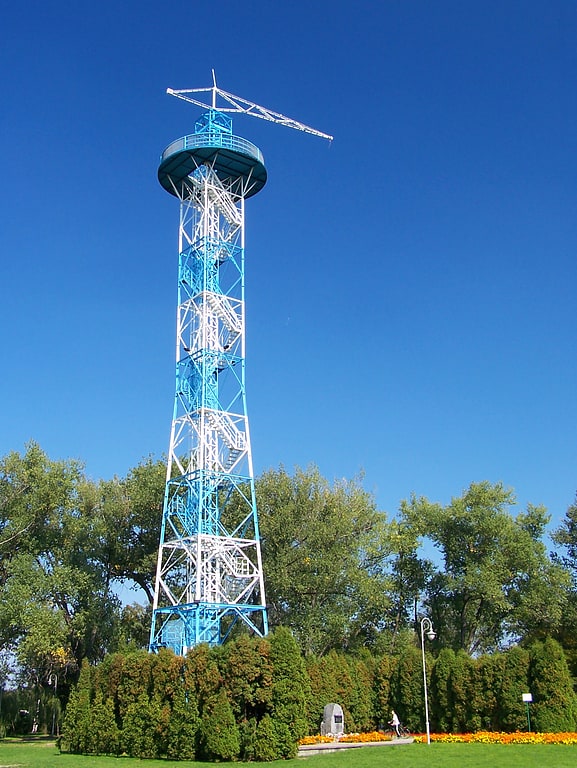
Also known as: Wieża spadochronowa w Katowicach
Tower in Katowice, Poland. Parachute Tower in Katowice is a 35-metre tall lattice parachute tower built in 1937 for training parachute jumps. It was used in the first days of World War II by the 73rd infantry regiment as an observation tower.
The parachute Tower in Katowice is the only existing parachute tower in Poland.[6]
Silesian Theatre

Also known as: Teatr Śląski im. Stanisława Wyspiańskiego w Katowicach
Theatre in Katowice, Poland. Silesian Theatre dedicated to Stanisław Wyspiański is the largest theatre in Silesia. It is located on the market square in Katowice.
It was built as "German Theatre" in the years 1905–1907, from plans by German theatre architect Carl Moritz. In the interwar Poland from 1922 to 1939 it was known as the "Polish Theatre".[7]
Address: Rynek 10, Katowice (Zespół dzielnic śródmiejskich)
Karol Szymanowski Academy of Music
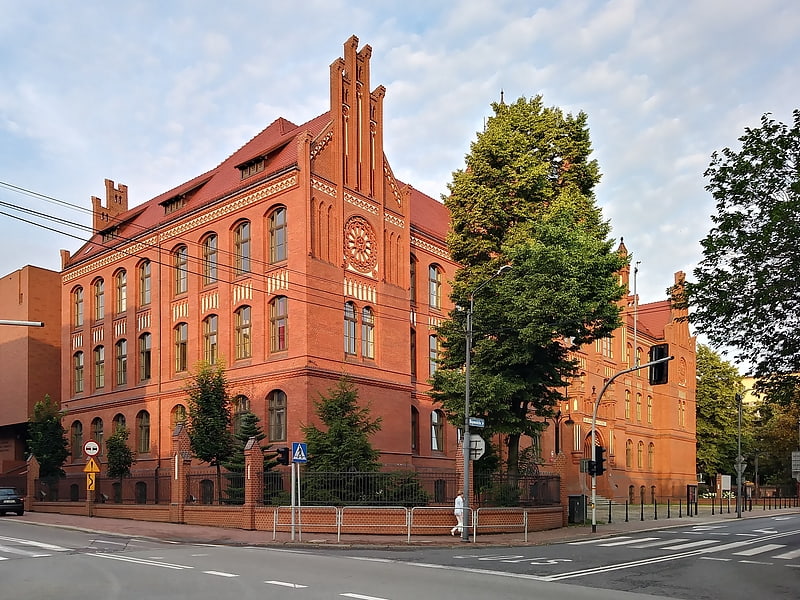
School in Katowice, Poland. The Karol Szymanowski Academy of Music is a school of music of university level in Katowice, in Poland. It is named for Karol Szymanowski.[8]
Address: 3 Zacisze, Katowice (Zespół dzielnic śródmiejskich)
Goldstein Palace
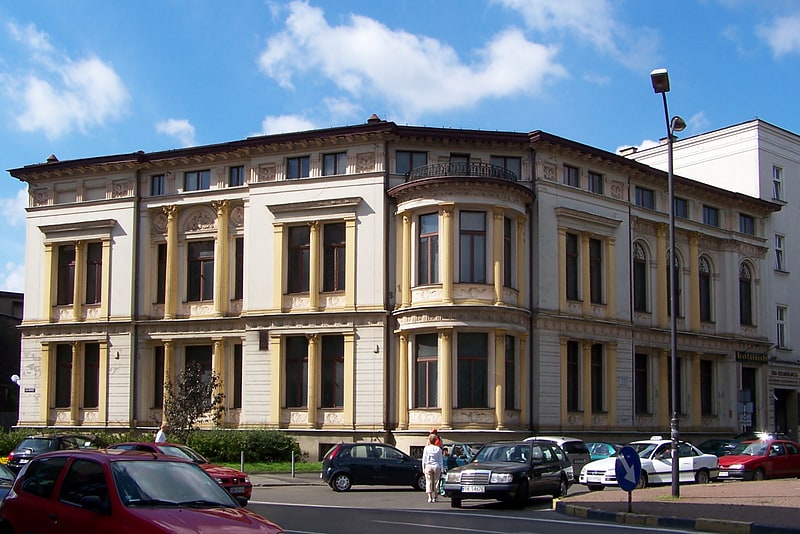
Also known as: Pałac Goldsteinów
Building in Katowice, Poland. The Pałac Goldsteinów or Goldstein Palace is neo-renaissance palace, which was built by two brothers, Abraham and Joseph Goldstein. It is located in Katowice, Silesia, Poland, at the west end of the city centre, at 50°15′33″N 19°0′47″E.
The palace is representative for the building style of second part of the 1870s. Front elevations and interior staircases are decorated in typical neo-renaissance ornamentation. The opulent use of marble and sandstone testifies of the owner's wealth. It has two floors. On every floor there are lords’ room, kitchen, bathroom, pantry and two rooms for staff.
The Goldstein brothers owned sawmills in multiple cities in Poland, also in Katowice, on the background of palace. After a fire burned down the Katowice sawmill in 1892, the Goldstein brothers, because of heavy losses, switched their main business to Wrocław. The Estate was sold to the firm "Kohlen Produzenten Georg Von Giesches Erben". Before the Second World War, the local Chamber of Commerce was located in the building. From 1952 until 1990, the building housed the Towarzystwo Przyjaźni Polsko-Radzieckiej (Fellowship of Polish-Soviet friendship) and the Przyjaźń (friendship) cinema. From 1960 to 1970 in the basements was a vanguard theater named "12a". There also was a restaurant "Kolumb" in the building, but currently it is undergoing reconstruction to become a Urząd Stanu Cywilnego (Registry Office) in 2007. The owner of the Goldstein Palace is City of Katowice.
The architect of the building is unknown, but historians suspect him to be from Berlin.[9]
Address: 12a Plac Wolności, Katowice (Zespół dzielnic śródmiejskich)
Cathedral of Christ the King
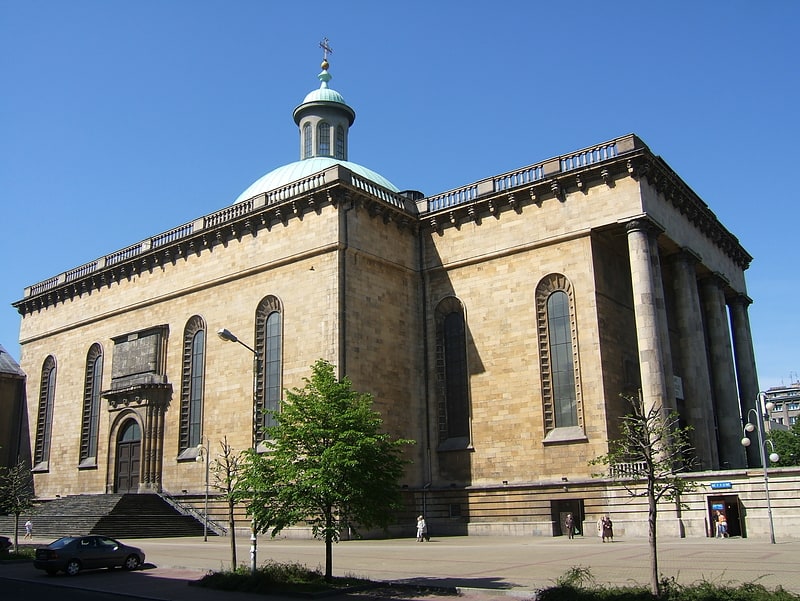
Also known as: Archikatedra Chrystusa Króla w Katowicach
Neoclassical cathedral with guided tours. Archikatedra Chrystusa Króla w Katowicach is a classicist archcathedral in Katowice-Śródmieście, Katowice, Poland. Constructed between 1927 and 1955, the Archcathedral of Christ the King is the largest archcathedral in Poland.[10]
Address: Plebiscytowa 49A, 40-041 Katowice (Zespół dzielnic śródmiejskich)
Church of the Resurrection
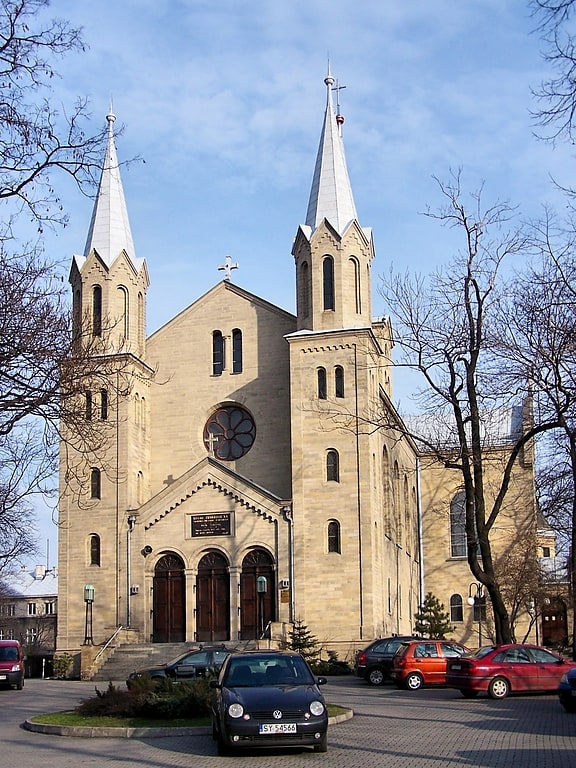
Also known as: Kościół Zmartwychwstania Pańskiego w Katowicach
Church of the Resurrection in Katowice is a neo-Roman Evangelical-Augsburg church in the Śródmieście district, Katowice, Poland. It was built in the years 1856–1858 and was the first masonry church in Katowice.[11]
Address: Warszawska 18, 40-006 Katowice (Zespół dzielnic śródmiejskich)
Silesian Philharmonic
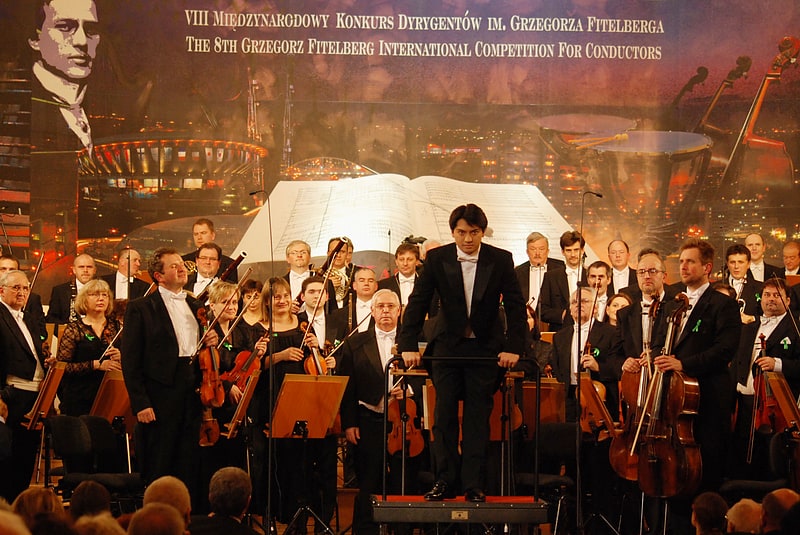
Also known as: Filharmonia Śląska
The Filharmonia Śląska w Katowicach is a music institution in Katowice, Silesia, Poland. The Silesian Philharmonic in Katowice was founded in 1945. The first concert of the orchestra took place on 26 of May 1945. A mixed choir was added in 1973.
The Silesian Philharmonic has a well-established position in the cultural life of the Upper Silesian Metropolitan Union. Over the decades, the most renowned musicians performed with it, for example Witold Małcużyński, Igor Oistrakh, Sviatoslav Richter, Adam Taubitz..[12]
Address: Sokolska 2, Katowice (Zespół dzielnic śródmiejskich)
St. Stephen's Church
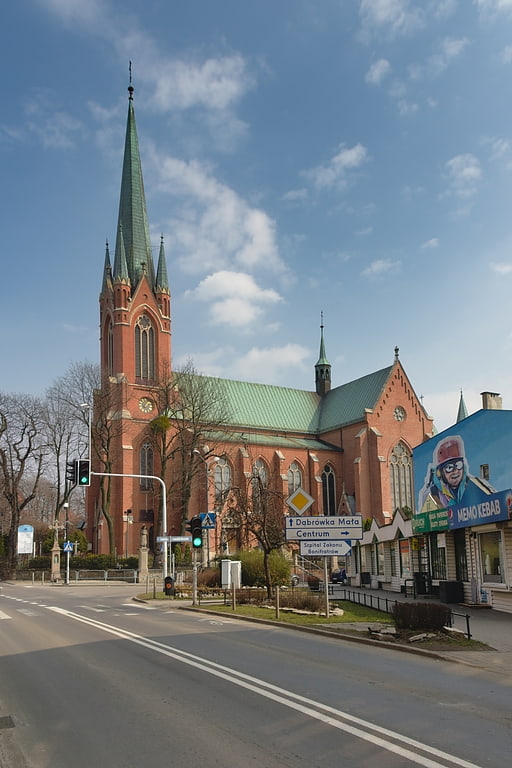
Also known as: Bazylika św. Szczepana i Matki Boskiej Boguckiej w Katowicach
Church in Katowice, Poland. The Kościół św. Szczepana or Saint Stephen's Church is a church in Katowice, Silesian Voivodship, Poland. It is dedicated to Saint Stephen and located at 50°16′9″N 19°2′17″E on Leopold Markiefki street.
Ludwik Skowronek initiated the building of new church in the Bogucice neighbourhood. It was finished by 1894 and on October 25 of the same year consecrated by cardinal Georg Kopp. In 1994 the church was painted. At its 100th birthday, all former priests visited the church. In July 2006 the Calvari altar was renovated.[13]
Address: ul. Leopolda Markiefki 89, 40-211 Katowice (Zespół dzielnic śródmiejskich)
Zadole Park
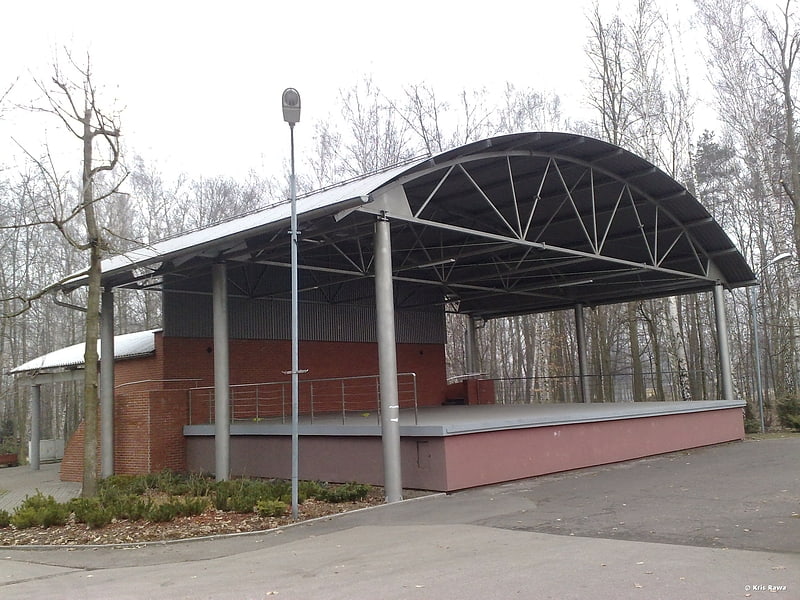
Also known as: Park Zadole
Park in Katowice, Poland. The Zadole Park which used to be a hamlet of Piotrowice, but now it belongs to Katowice districts of Upper Silesian Metropolitan Union there is a park with an amphitheater for 800 persons, a swimming-pool complex, a cafe and a playground for children and walking alleys. In 1906-1914 it was a place of the convention of the Polish choirs and bands within the framework of the Singing Societies existing in that region at that time. Students Hostels adjoin the center and not far from them there are tennis courts - free of charge.[14]
Address: Park Zadole, Katowice (Zespół dzielnic zachodnich)
Muzeum Historii Katowic
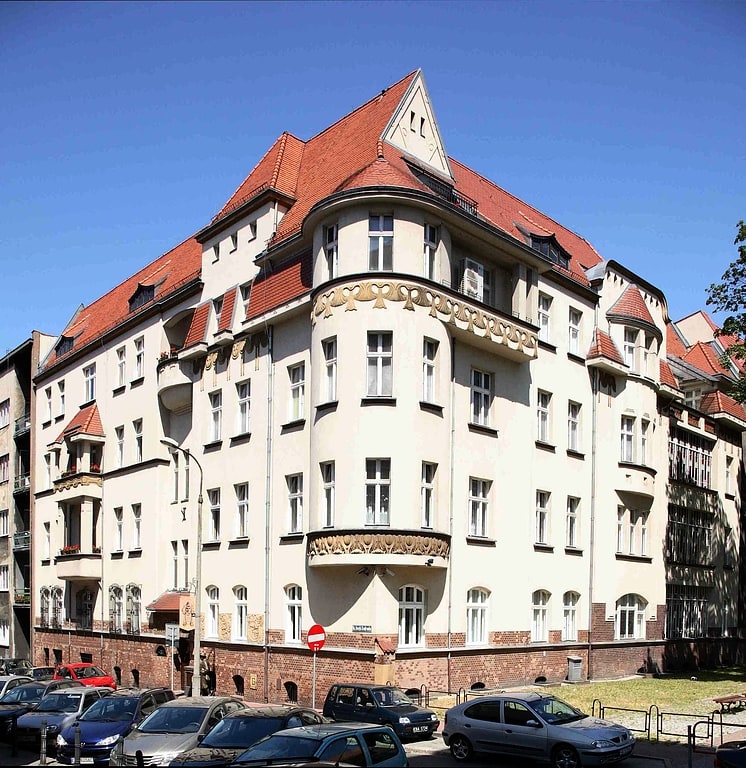
Museum of the History of Katowice - a local government cultural institution charged with preserving the documentation of Katowice's past and disseminating the historical, artistic and aesthetic values of the city as part of the Upper Silesian and Polish and European heritage.
There are nearly 140,000 exhibits in the museum's collection, including a rich collection of works by Stanislaw Ignacy Witkiewicz, the most significant of which is a collection of 26 portraits of the "Asymmetrical Lady", Eugenia Wyszomirska. The most important exhibits of the Art Department also include the largest collection of Silesian porcelain from the interwar period - the "Czuday" company from Szopienice, transformed into "Giesche" from Katowice-Bogucice and the "František" steelworks from Bykowina, as well as the post-war Steatyt company.
The museum in 2014 was awarded the "Sybilla 2013" for the exhibition "Water and soap the best whitewash. In the laundry and mangle in Nikiszowiec", which can be seen in the Department of Urban Ethnology in Nikiszowiec.
Address: Ul. ks. J. Szafranka 9, Katowice (Zespół dzielnic śródmiejskich)
Drapacz Chmur
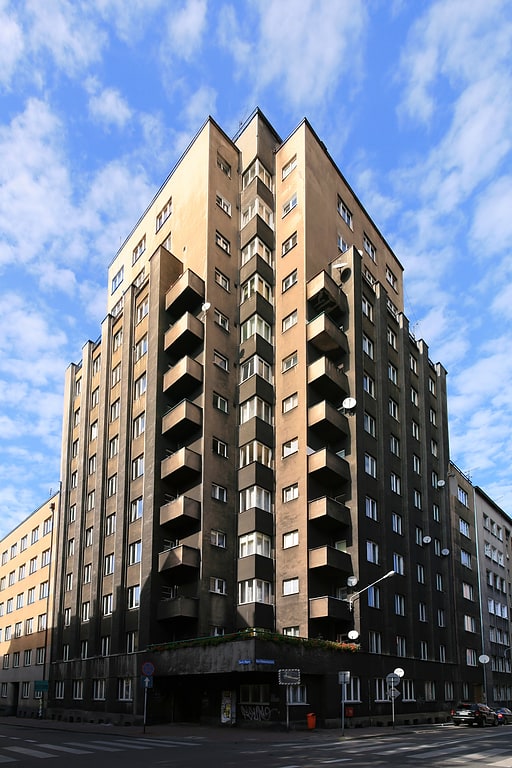
Building. Drapacz Chmur is a historical building in Katowice, Silesia, Poland. It was the second skyscraper built in post-World War I Poland. Finished in 1934 after five years of construction, it made pioneering Polish use of steel frame construction. Today, Drapacz Chmur is considered the most spectacular and beautiful example of functionalism in Poland.
The building has seventeen stories, fourteen above the ground, and contained one of the first garbage chutes in Poland. It is 60 m tall and until 1955, it was the second highest building in the country (after Prudential, Warsaw). It was designed by architect Tadeusz Kozłowski and structural engineer Stefan Bryła to house Polish Revenue Office employees. The flats are spacious and luxurious. Gustaw Holoubek and Kazimierz Kutz were among the building's notable residents after World War II.
Drapacz Chmur is located at 15 Żwirki i Wigury Street.[15]
Address: 15 Franciszka Żwirki i Stanisława Wigury, Katowice (Zespół dzielnic śródmiejskich)
Silesian Library
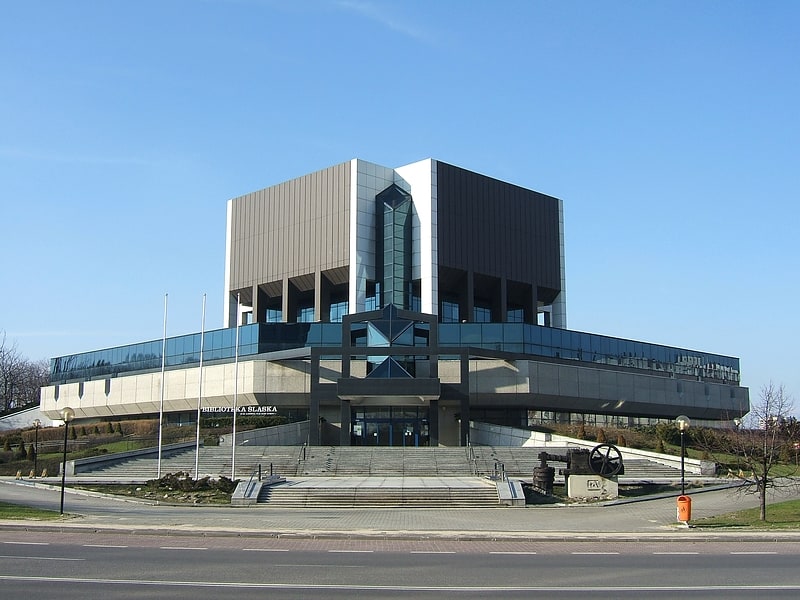
Also known as: Biblioteka Śląska
Library in Katowice, Poland. Silesian Library, is one of the most modern libraries in Poland, and is located in the south-western city of Katowice, Silesia.[16]
Address: Plac Rady Europy 1, 40-021 Katowice (Zespół dzielnic śródmiejskich)
Muzeum Archidiecezjalne

Archdiocesan Museum in Katowice - a museum of religious art existing in Katowice, collects artifacts related to the history of the Catholic Church and the people of Upper Silesia.
The institution was established in 1975 by the decision of Herbert Bednorz, the then bishop of Katowice, although efforts to collect and present a collection of religious art had already been made in the interwar period.
Address: Jordana 39, 40-043 Katowice (Zespół dzielnic śródmiejskich)
Valley of Three Ponds
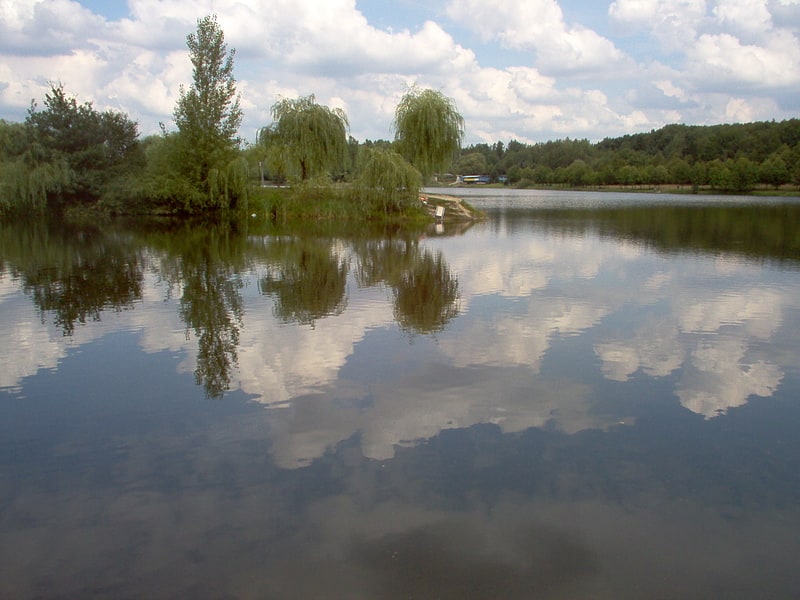
Also known as: Dolina Trzech Stawów
Park in Katowice, Poland. Valley of Three Ponds Polish: Dolina Trzech Stawów) is a large park and wooden area in the southern part of the city of Katowice, Poland. The name comes from the existence of three large ponds in the park area.[17]
Katowice Forest Park
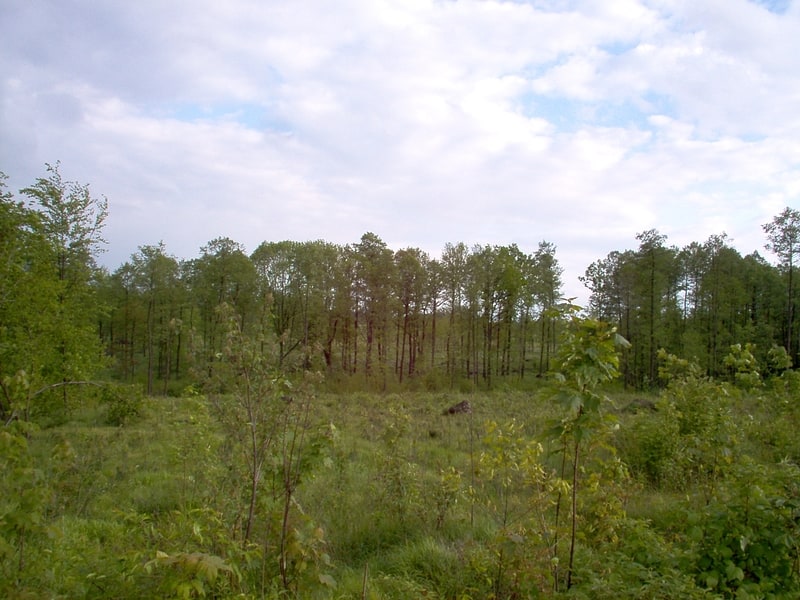
Also known as: Katowicki Park Leśny
Wildlife park in Katowice, Poland. Katowice Forest Park Polish: Katowicki Park Leśny) is a large park and wooded area in the southern part of the city of Katowice, Poland. It is the largest green area in Katowice.[18]
Market Square in Katowice
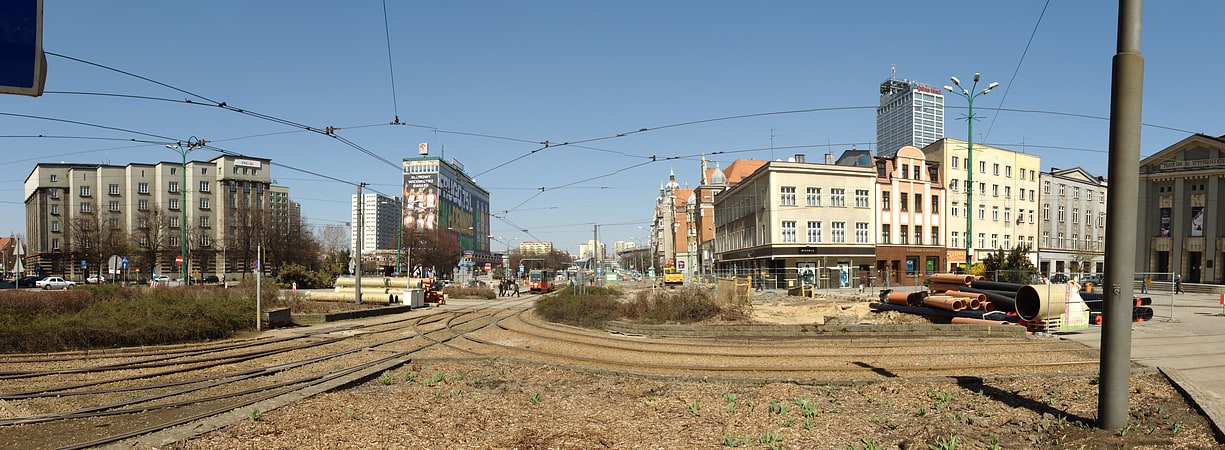
Also known as: Rynek w Katowicach
Tourist attraction in Katowice, Poland. Market Square in Katowice is a central feature of the Śródmieście district in the city of Katowice, Poland. This market square, the main one in the city, dates to the late 19th century. It has been rebuilt several times, with the latest round of changes currently in progress. During the communist era, some of the historic buildings were demolished to make way for modern service facilities. A characteristic feature of the square is a network of streetcar tracks, crossing the square in several directions. There are three squares within the marketplace: Kwiatowy, Teatralny, and Obrońców Katowic.
The Silesian Theatre is located there.
In the 2010s the city has started to redesign the square. The Rynek, as understood by the Katowice authorities, is a central place and a showpiece of the city. Obrońców Katowic Square is a location of the Monument to the September Scouts. On the square and in the neighboring streets a hot-spot provides free wireless internet access.
At noon, Katowice's bugle call is played from the top of a tenement house at the intersection of Młyńska and Pocztowa Streets. The author of the music is an amateur composer from Bytom, Adam Biernacki. The custom of playing the bugle-call has a short tradition, it was created in 2002.[19]
Silesian Theatre of Doll and Actor Ateneum
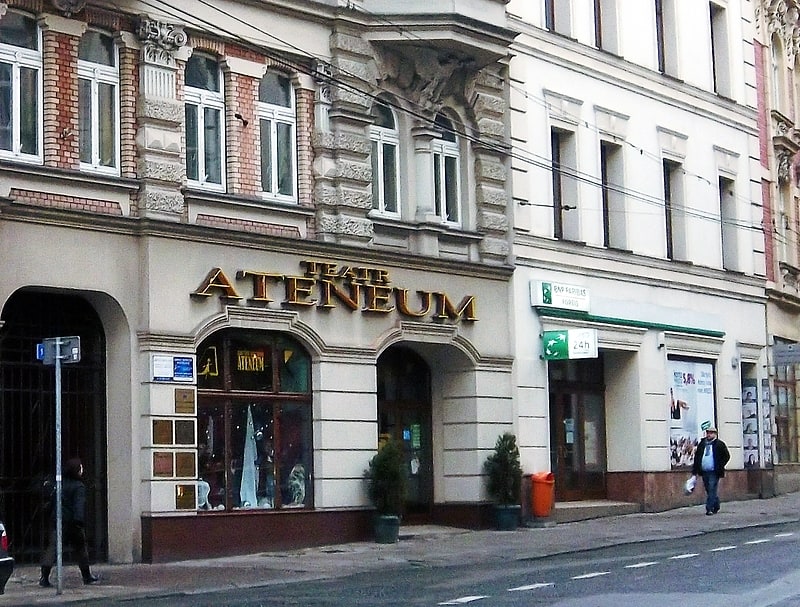
Silesian Puppet and Actor Theatre "Ateneum" in Katowice - one of the oldest puppet companies in Poland. It exists since 1945.
Initially, it was dominated by the artistic directors Juliusz Glatty, Jerzy Zitzman and Zygmunt Smandzik, who for many years decided on the artistic shape of the stage. Later concepts changed with each successive director. However, there was always a clear connection to the local creative environment. Here it is worth noting the dramaturgy of Edmund Wojnarowski, most of whose plays premiered at the "Ateneum", or the compositions of Bogumil Pasternak, for many years musical director and later artistic director of the theater. It is also hard not to mention the stage designs by Alicja Kuryło.
Gustaw Morcinek was one of the literary managers, and such great names as Katarzyna Gärtner, Danuta Michałowska, Michał Banasik, Jan Dorman, Roman Kalarus, Janusz Kapusta, Adam Kilian, Michał Lorenc, Teofil Ociepka, Krzysztof Penderecki, Józef Skrzek, Witold Szalonek or Jan Brzechwa appeared on the stage.
Today's repertoire, addressed mainly to children's audiences, includes both fairy tale classics and contemporary works. It is realized in various conventions and techniques, using the means of puppet theater, but also links with the live stage. Among the currently staged productions, those which deviate from staging patterns are of particular interest: Among the currently staged productions, the following are particularly interesting: Pinocchio by Carl Collodi, Gulliver's Travels by Jonathan Swift, Puss in Boots - a musical fairy tale by Bogumił Pasternak based on a text by Jan Brzechwa, The Nightingale by František Pavliček, The Magnificent Ferdinand by Ludwik Jerzy Kern, and A Parable of Happiness by Krystyna Jakóbczyk.
The ensemble has performed many times abroad, e.g. in Austria, the Czech Republic, the Netherlands, Germany, Slovakia, the USA and the United Kingdom. It has also participated in many national and international festivals, often winning awards for its presentations. For several years he has been cooperating with Czech and Slovak artists: Eva Farkašová, Karl Brožek, Petr Nosálek, Pavel Hubička, Tomáš Volkmer.
Since 2002 the "Ateneum" has been the organizer of the International Festival of Puppet Theatres "Katowice for Children". The "Ateneum" Gallery operates in the premises at 25, 3 Maja Street.
Address: Św. Jana 10, Katowice (Zespół dzielnic śródmiejskich)
Nikiszowiec

Nikiszowiec a part of an administrative district Janów-Nikiszowiec of Katowice city.
Initially it was coal miners' settlement of Giesche mine built on the land of Gieschewald manor (Giszowiec) between 1908–1918 on the mining – metallurgical concern initiative Georg von Giesches Erben. On 9 May 1924, the manor was liquidated, and Nikiszowiec together with Giszowiec were incorporated into Janów district.
In 1951 the district became a part of a new city – Szopienice, however, this decision was voided in 1960, when both Szopienice and Nikiszowiec were incorporated to Katowice.
The remnants of the original workers' housing estate familoks (specialized multi-family residences) comprise one of Poland's official national Historic Monuments (Pomnik historii), as designated January 28, 2011 and tracked by the National Heritage Board of Poland.[20]
Jerzy Ziętek Square
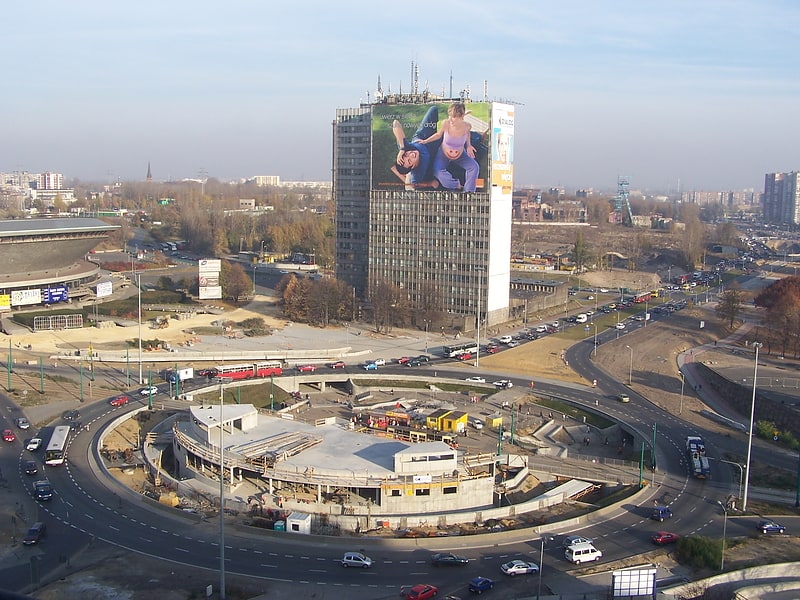
Also known as: Rondo gen. Jerzego Ziętka w Katowicach
The Rondo Generała Jerzego Ziętka in Katowice is the roundabout in the centre of the city, in the Silesian Voivodship in southern Poland. On that main traffic circle, the Aleja Korfantego and the road 79, part of the Drogowa Trasa Średnicowa, meet.
To allow an easy passage through the Katowice city centre for road 79, two tunnels of 657 and 650 metres have been built. There are ramps leading to the roundabout, which are the exit for the city centre. Also, a new bus and tram station, fully equipped for handling disabled people, has been built.
The traffic circle, dedicated to general Jerzy Ziętek, has three levels. At -1 level, the tunnel is located, on the ground floor there are various business offices, and on the +1 level the Katowice Museum of Fine Arts and an information centre about the city are present. A glass cupola tops it all.
General Jerzy Ziętek, namegiver of the Rondo, and Wojciech Korfanty, namegiver of one of the streets that crosses it, were named as the two most important Silesian persons in the 20th century by the Gazeta Wyborcza, with Korfanty coming in first and Ziętek second.[21]
Address: rondo Gen. Jerzego Zietka 1, 40-121 Katowice (Zespół dzielnic śródmiejskich)
Śródmieście
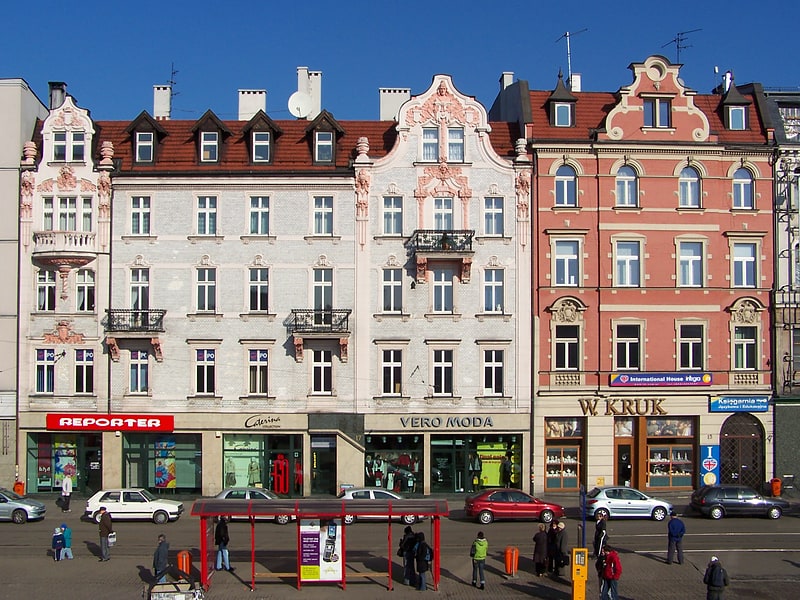
Śródmieście is a district of the city of Katowice in southern Poland. It has an area of 3.81 km2 and in 2007 had 35,927 inhabitants.
This is the most urbanized part of the city, home of Silesian Parliament, Silesian Museum and Silesian Library along with international companies like ING or CITI Bank. There are several consulates in the city centre.
The master plan of Central Katowice was designed by Friedrich Wilhelm Grundman in the second half of the 19th century.
Extensive city growth took place during the Industrial Revolution. The centre has the finest examples of Modernism such as International Style and Bauhaus. Central Katowice also contain a significant number of Art Nouveau (Secesja) buildings along with the Communist Era giants such as Spodek or Superjednostka.[22]
Izba Pamięci Kopalni Wujek

Museum - Wujek Mine Memorial Chamber in Katowice - a museum located in Katowice, on the grounds of the Wujek Coal Mine in the Brynów district. It is dedicated to the memory of the pacification of the mine, which took place on December 16, 1981, after the introduction of martial law.
The museum was established on the initiative of the Social Committee for the Remembrance of the Wujek Coal Mine Miners Who Died on December 16, 1981. In three exhibition halls, exhibits related to the history of mining and the mine itself are presented, as well as memorabilia from the period of martial law, the pacification of the mine (a re-enactment of the fight between a miner and a policeman, a 1:100 scale diorama of the events at the mine), and those related to the victims of the clashes. The exhibition is supplemented with photographs, books, medals and stamps related to the mine. As part of the tour of the facility, a documentary film by Agnieszka Swidzińska entitled "Życiorysy z bliznosci" ("Neighborhood Stories") is played. As part of the tour of the facility, a documentary entitled "Life Stories with Scars" by Agnieszka Swidzińska is played.
The museum is a year-round facility, open Monday through Friday from 9 a.m. to 3 p.m. (Tuesdays from 9 a.m. to 5 p.m.). Tours of the museum are free.
Address: Pola 38, 40-596 Katowice (Zespół dzielnic zachodnich)
National Polish Radio Symphony Orchestra Katowice
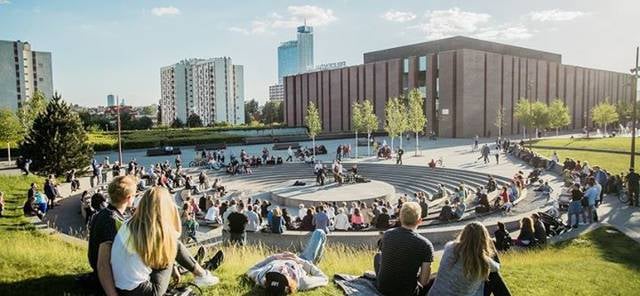
Concerts and shows, Theater
Address: Plac Wojciecha Kilara 1, Katowice (Zespół dzielnic śródmiejskich)
Kościół Świętych Męczenników Jana i Pawła

Parish of St. John and Paul the Martyrs - a Roman Catholic parish located in Katowice, in the district of Dąb. The parish belongs to Katowice Archdiocese and Katowice-Zależe deanery. It is located in the northwestern part of the city and covers the entire Dąb district. The parish had a population of about 6730 parishioners in 2015, which is about 90% of the district's population.
Its origins are associated with the population growth of Debbie in the 19th century. The first wooden church was built in 1875. Due to insufficient capacity of the church, cardinal Georg Kopp issued a decree establishing a parish in Dęba on 18 August 1894. Fr Maximilian Krocker became the first parish priest on 8 July 1895. Construction of the parish church in Neo-Romanesque style with elements of Eclecticism by Ludwig Schneider lasted from 1901 to 1902.
Address: Chorzowska 160, 40-101 Katowice (Zespół dzielnic północnych)
Sejm Śląski
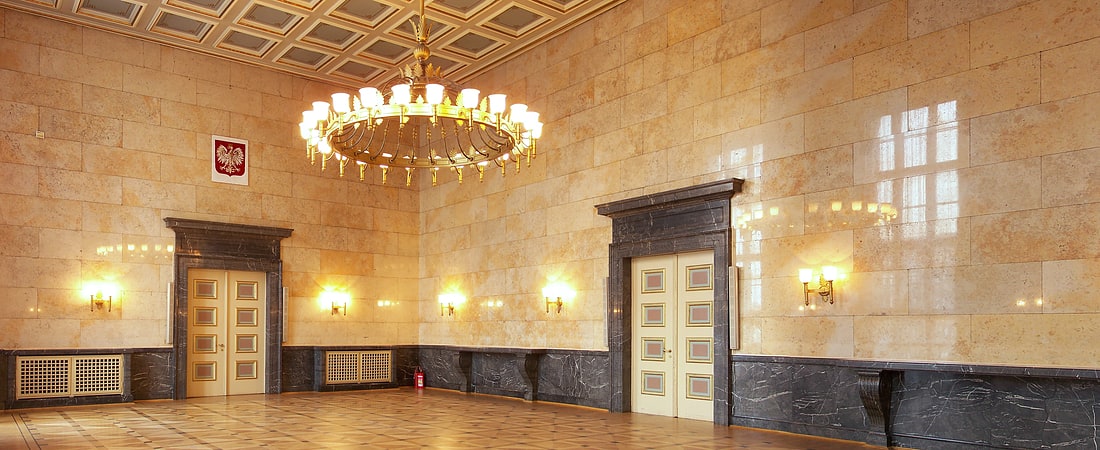
Silesian Sejm Building - a historic building located in the center of Katowice, at 25 Jagiellońska St. Built in modernist style. In the interwar period it was one of the largest administrative buildings in Poland. Its Sejm hall was a model for the hall of the Sejm of the Second Republic. Currently, it is the seat of the Silesian Marshal's Office and the Silesian Provincial Office.
Gallery "Szyb Wilson"
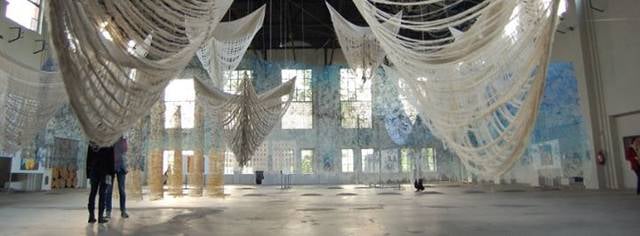
Museum, Shopping, Art gallery, Performing arts, Music venue
Address: ul. Oswobodzenia 1, 40-403 Katowice (Zespół dzielnic wschodnich)
Pałac Młodzieży im. Aleksandra Kamińskiego
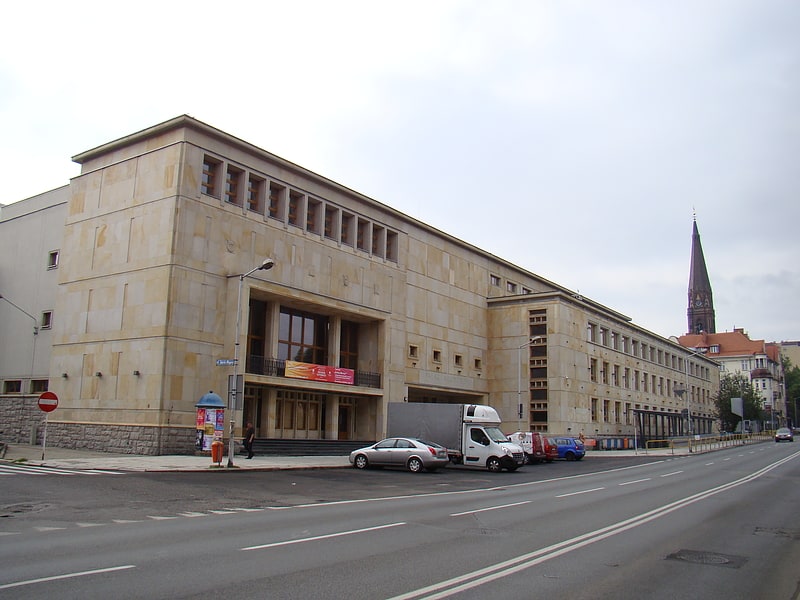
Pałac Młodzieży im. prof. Aleksander Kamińskiego in Katowice - an out-of-school education institution of the city of Katowice. Pedagogical supervision over the Youth Palace is exercised by the Silesian Curator of Education in Katowice.
Address: Mikołowska 26, Katowice (Zespół dzielnic śródmiejskich)
3 Maja Street
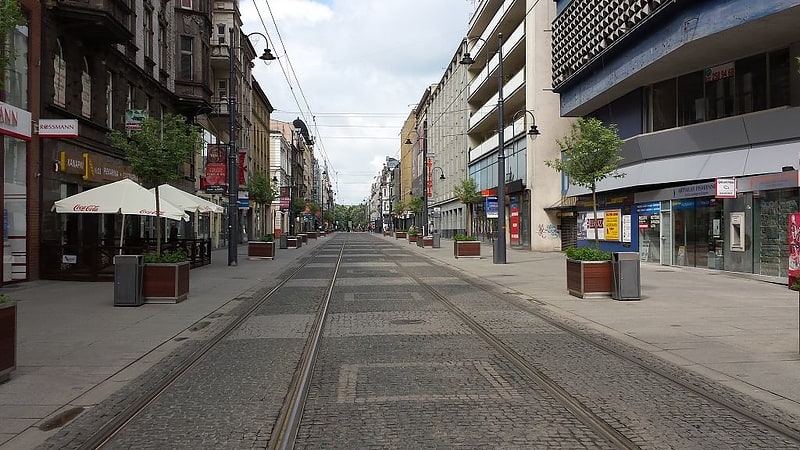
Also known as: Ulica 3 Maja w Katowicach
3 Maja Street in Katowice is a street in the centre of Katowice. The street was built in the 19th century. During World War II the street was called Grundmannstraße, 1867−1922 Grundmannstraße, 1856−1867 Industriestraße.
The street starts at the Market Square in Katowice. It passes through the Wawelska Street, Wilhelm Szewczyk Square, Stawowa Street, and Juliusza Słowackiego Street. The street ends at Wolności Square.[23]
Muzeum Historii Komputerów i Informatyki
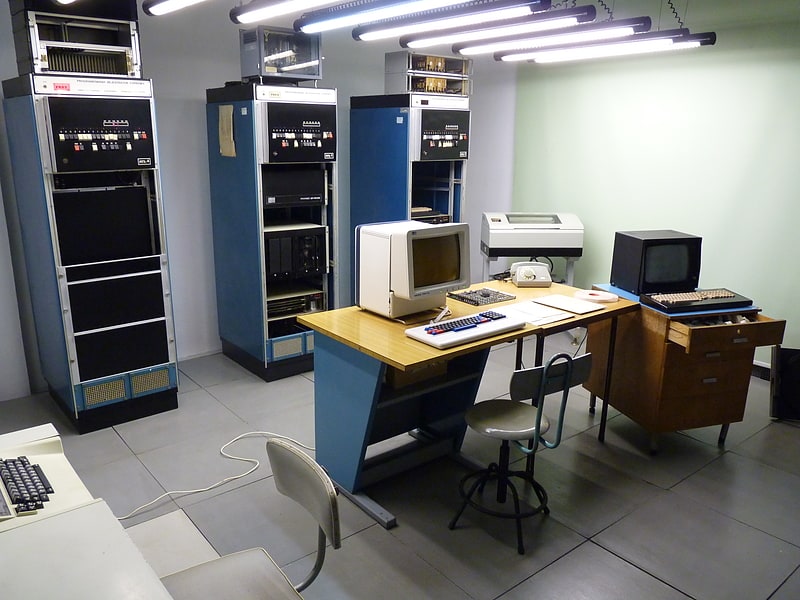
Museum of the History of Computers and Information Technology - a private museum dedicated to the history of computers and information technology established in Katowice, Poland on December 12, 2012.
In the permanent seat, next to the train station in Katowice at 1 Oddziałów Młodzieży Powstańczej Square, temporary thematic exhibitions are presented, such as "The colorful world of iMacs" or "The world of game consoles".
The museum initially presented its collections in the building of the College of Mechatronics. In 2014 it moved to a building on Oddziałów Młodzieży Powstańczej Square (current museum office). In 2016 the exhibition was opened in the building of the cultural institution "Katowice - Miasto Ogrodów".
The exhibits comprising the collection come both from the Museum's own purchases and from numerous donations. Among the donors can be found private individuals, but also institutions such as: CPU Service sp. z o.o. Kroll Ontrack, MOSiR Zabrze, IBM Serwis, Huta Pokój, and many others.
The exhibit is divided into three time periods: 1960s-70s, 1980s-90s, and 1990s.
On 25 October 2016, a permanent exhibition was opened in the building of the Katowice City of Gardens Cultural Institution named after Krystyna Bochenek. The exhibition presents a cross-sectional historical outline of the development of the field of IT, also presenting the achievements of domestic companies producing IT equipment. The entire exhibition is interactive. Among the exhibits there is also an ODRA computer with a 1305 central processing unit in a recreated Computing Centre, and over 240 different interactive workstations. In the exhibit you can trace the development of mobile hardware, interactive entertainment, 8, 16, and 32-bit computers, learn about the evolution of memory media, and touch computers such as: Elwro 800 junior, Elwro 804PC, Elwro 801 AT, Meritum, ComPan, Bosman, SMC-10, PRS 4. A rarity is the remnant of the ODRA 1304 computer donated by the AGH University of Science and Technology in Krakow, the only one in Poland. The facility has active 8 track tape memories manufactured by Japanese companies Fujitsu, HP, Meramat, IBM, DIGITAL.
The Museum, as the only one in Poland, is conducting commissioning and restoration work on computer systems of the ODRA 1305 series, under the leadership of engineer Romuald Jakóbc. The process of restoring the systems to operation, has been called "Operation Thanasis". On 26.04.2019, the EXEC was launched on a unit donated by the AGH University of Science and Technology of Krakow with serial number 384, manufactured in 1985 and shut down on 1 May 2010 at the Lublin Tatary railway station.
Since 2018, the museum has established a partnership with The National Museum of Computing from the UK, through the collaboration, among other things, restoration work is being carried out on the ODRA 1305 computer software.
Works on a new exhibition devoted to computers produced in ZEG and EMAG TYCHY are in progress.
Exhibits on display will include the SMC-10, MiSter Z80/ComPan 2.
The museum as of 2017 has 3943 computers.
From April to December 2020, a weekly live program called "An Hour or Two" was broadcast on the museum's YouTube channel.
Address: Sienkiewicza 28, 40-061 Katowice (Zespół dzielnic śródmiejskich)
Old Timers Garage
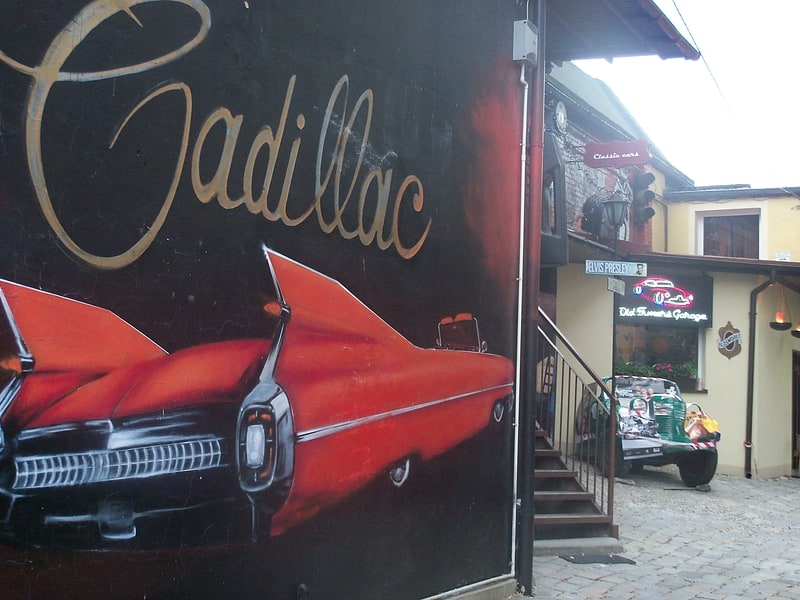
Old Timers Garage - a theater and music club located in Katowice, Poland. Old Timers Garage is located in the historic, renovated premises of the Piast Cinema. It is one of the most active independent cultural entities in the region. Since November 2009 over 600 cultural events have taken place in the club. Well-known Polish and foreign music stars have performed on its stage.
Old Timers Garage also functions as a small automotive museum. The building houses 6 exhibits of vintage cars, from a collection of over 30 examples.
Address: Jankego 132, 40-671 Katowice (Zespół dzielnic południowych)
Izba Śląska
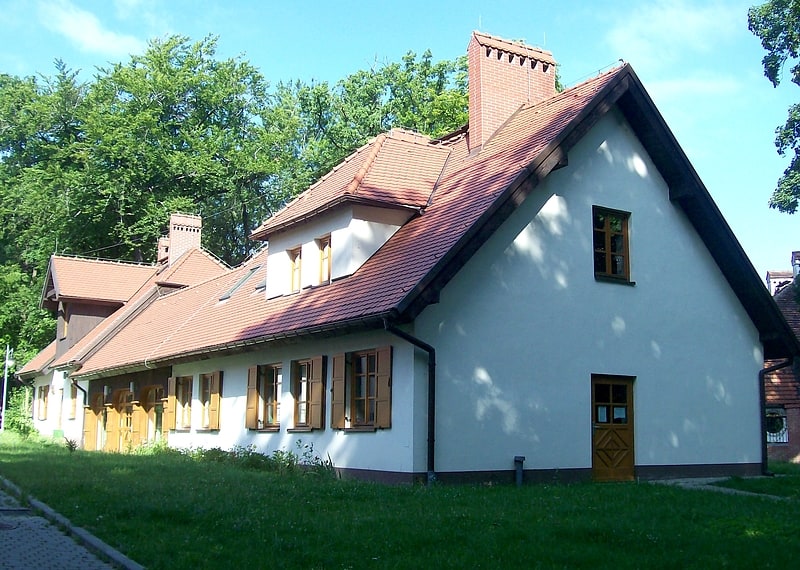
Silesian Chamber - a museum in Katowice's Giszowiec district at 3-3a Pod Lipami Square, displaying exhibits related to the culture and art of Upper Silesia as well as paintings and memorabilia of the painter Ewald Gawlik. It is a branch of the Municipal Cultural Center Szopienice-Giszowiec in Katowice.
The building was designed by Jerzy and Emil Zillmann and built in the early 20th century. It consists of two buildings connected together. Initially, it housed a stable, coachman's quarters and a coach house. In 1986, the Staszic mine gave the building to retired employees, who arranged a club in it. It was renovated and refurbished. During the renovation efforts were made to give the interior a traditional Silesian character.
His first cultural initiative was to look after the regional paintings of Ewald Gawlik. He was given three rooms upstairs in the building. He put there his couch, aquarium, birdcage, black closet and chest of drawers decorated with his own paintings. The exhibition of Gawlik's paintings dedicated to the region and its culture was slowly supplemented with traditional antique furniture and everyday necessities collected mainly by the employees of the mine and the residents of the estate. The Silesian Chamber was transformed from the Senior Citizens' House into a branch of the Szopienice-Giszowiec Municipal House of Culture and it houses a museum with exhibits connected with the history of the estate and the region, many personal souvenirs, equipment from the studio and a gallery of Ewald Gawlik's paintings.
In addition to the permanent exhibition of paintings and antique furnishings, permanent activities are also organized here.
Permanent activities in the Silesian Chamber: Upper Silesian Union (Upper Silesian Association), Przeróbka Senior Citizens' Club, Old Age Pensioners and Pensioners Club of the Solidarity Trade Union of the Staszic Coal Mine, Senior Citizens' Club of the Staszic Coal Mine, Senior Citizens' Club of the Staszic Coal Mine, Giszowianki Club (Senior Women)
Earlier, when Gawlikówka was still inhabited by retired mine workers, museum lessons were organised there, intended mainly for school children: meetings with an ethnographer: everyday life, customs and rituals in Upper Silesia; a tour of Giszowiec; practical classes - sauerkraut pickling, Easter egg painting, bread and kolacz baking, butter, lard and sour soup making.